warning:
- lots of cats (I’m not even kidding)
Cats.
Cats are fucking monsters.
Yet people love them.
I love them.
And the Internet’s obsessed with them.
And ‘obsessed’ is an understatement: A 2015 survey found that cats takes about 15% of Internet traffic. Most of the animal celebrities on the Internet are cats: Grumpy, Maru, Lil Bub, Colonel Meow; lolcats, basically memes about cats, are one of the building stones of the meme culture; and a few other billions of images, videos, songs, emojis (the one you’re seeing on the title), memes, and animations that are all dedicated to the Internet’s love of cats.
Cat images are the essential building blocks of the Internet.
cats and early blogs
Back in the late 90s and early 2000s, that's when Web 2.0 and people really started making their mark online. You know, those catchy phrases, inside jokes, and the earliest of memes, even before memes became a thing? They were around even before the fancy web platforms we have today.
But back then, logging onto the Internet was like entering a whole new world for most. This is a period of ideas and experimentation. There were no success model on the Internet yet, social media as you know it wasn’t even a thing. Most people interact on online forum, sharing their thoughts, ideas, and especially, cat images.
The origins of cat culture on the Internet are intriguing to consider. The proliferation of adorable 'cat memes' can probably be traced back to early Internet communities like 4chan, where early adopters of the Internet sought refuge on really primitive message boards.
What’s intriguing to think about is what those early Internet adopters were thinking when they started sharing cat pics in those wild online spaces. They must've had a weird sense of humor, realizing how weird it was to be all "aww" over cute kittens while surrounded by some seriously messed-up stuff on the Weird Wild Web. But maybe that's what made it so appealing—it was like a little break from the craziness, a chance to just chill with something wholesome for a minute.
Moreover, the sharing of cat pictures on these early message boards served a deeper purpose beyond mere amusement. It provided a means of expressing emotions and connecting with others in an environment where discussions about feelings may have been challenging or even discouraged. In a space where individuals may have felt socially isolated or emotionally distant, cat imagery became a universal language, a symbol of shared humanity amidst the digital chaos.
the infinite cat project
In 2003, someone on an Apple forum snapped a pic of their cat, Frankie, checking out a photo of himself on a computer screen.
Then, they made it even more mind-bending by putting that new pic on the screen, getting Frankie to look at it, and snapping another photo. They posted the result on the forum, and boom! it became a thing. Other forum users started taking pics of their cats looking at new versions of the image on their own computer. Cats looking at cats looking at cats lookings at cats looking at cats looking at cats.
Catception.
The answer is at the end of the post.
So a programmer named Mike Stanfill set up a website called the Infinite Cat Project to keep this whole catception thing going forever. It is now part of Petside. Right now, there are a whopping 1,856 photos of cats looking at other cats on there.
But here's the fun part: as you scroll through all these furry faces, you also get a glimpse of how home computers have evolved since 2004, from a big, bulky white block to a slimmer, more delicate laptop. Technology has gone a long way, but our love for cats? Still the same.
the first cat video on Youtube
2005 was the year that YouTube came to the Internet. As it happens, the platform’s creators, Steve Chen and Chad Hurley, demonstrated the platform’s potential to inventors by showing a test video of Chen’s cat hunting yarn.
Chen and Hurley originally thought YouTube would be all about sharing everyday moments, hence why their test videos were pretty mundane – just a cat playing with yarn or a visit to the zoo.
But people started getting super creative. They busted out elaborate dance routines, lip-sync battles, and spiced up their videos with epic music and special effects. Some even got into animation or started making slick video diaries.
Of course, cat videos were still a big hit.
In 2012, the Walker Art Center in Minneapolis kicked off something pretty special: the Internet Cat Video Festival. It was like a big party where people gathered to watch a bunch of cat videos on a massive outdoor screen.
And the best part? They even handed out a "Golden Kitty Award" to the creator of the public's favorite video.
Now that an event I would like to join.
cats that look like Hitler
is a satirical website featuring photographs of cats that bear an alleged resemblance to You-Know-Who, founded by Koos Plegt and Paul Neve in 2006. And you might be surprised by how many cats in the world that fit the description.
celebrity cats
Starting around 2012, celebrity cats have pretty much taken over the Internet pet scene. You've got these big names like Grumpy Cat, and Maru that everyone knows. And it's not just about being cute anymore; these cats are making serious bank. They've got managers negotiating deals left and right for ads, merchandise, you name it.
And it's not just a few lucky cats getting all the attention. There's this whole industry now with YouTube channels, Twitter accounts, and Instagram profiles all dedicated to cats. Some owners just want to share cute moments with their friends, but others are chasing that viral fame and fortune.
It's like the Internet has become this massive marketplace, and these superstar cats are at the top of the food chain. People love them because they're like the trusted brands of the cat world. And the more popular they get, the more popular they become. It's like a snowball effect.
So, in 2020, these cats were basically the rockstars of the Internet pet scene, with follower counts and fame that makes other cat accounts look tiny in comparison.
Maru
By the numbers, Maru is the most famous cat on the Internet. In 2016, he won a Guinness World Record for the number of times that videos of a single animal had been viewed on YouTube—more than 325 million at that date.
Maru uses the user name mugumogu to share her videos. Seldom does one see his owner in the videos. The films feature English and Japanese title cards that set the scene and describe the happenings.
The Youtube account of Maru are collections of short clips showing Maru doing different activities. The title card of most videos indicates the main theme or action. In these movies, Maru displays his amusing personality, a playful demeanor and an obsession with boxes, evidenced by his most popular video shown above.
Grumpy Cat
In 2012, a user named u/Cataliades posted to Reddit a picture of a cat named Tardar Sauce, whose markings gave her a permanently grumpy look. The post was titled, “Meet Grumpy Cat.”
The cat’s image rose quickly to the top of the subreddit. It spread rapidly to other parts of the Internet, while Bundensen (the brother of Tardar Sauce’s owner, Tabatha Bundensen) fanned the flames by posting new images to Reddit:
Grumpy Cat (the cat’s stage name) had visible disabilities but was in good health. She had feline dwarfism, which, combined with an underbite and fortuitous coloring, gave her the permanent appearance of a scowl. Her appeal to Internet users was concrete and immediate.
When her owner held a question-and-answer session on Reddit, a commenter wrote: This isn’t a question, and I feel like it’s kind of a weird thing to say, but I want you to know how much Grumpy Cat means to me. I just started working two full time jobs and I’m generally tired and cranky all the time. My fiance knows that when I’m in a mood (which is often these days) referencing grumpy cat will always make me smile. Sometimes he texts me pictures of grumpy cat throughout the day when I’m at work. Also when I’m being particularly unpleasant, he calls me ‘grumpy cat’ which, again, always kind of makes me smile.
As Grumpy Cat’s fame grew, her owner began selling merchandise, getting her a monetized YouTube channel, and even making her own movie. The cat’s scowl adorned baby bibs, calendars, car decals, coffee mugs, keychains, pillows, office supplies, pajamas, plush animals, slippers, shirts, and socks, among other merchandise. She was the face of Friskies. She had her own brand of “coffee drink.” Grumpy Cat is the highest valued Internet animal stars at around 1 million dollars.
Grumpy Cat passed away in May 2019. She was publicly mourned the world over.
tiktok or decentralization of the hierachy of cat influencers #catoftiktok
Tiktok is the last place on the surfacte of the Earth that anyone can be an influencer overnight, thanks to it magnificient yet mysterious recommendation algorith. This, of course, applies to both humans and cats on Tiktok.
This decentralization has several implications. It democratizes fame, giving rise to a more diverse array of cat influencers. Anyone with a camera and a charismatic cat can potentially become a star. The phenomena fosters a sense of community among cat lovers, as they can discover and engage with a variety of content creators and their cats, all orbiting around the #catoftiktok hashtags.
And finally, it challenges the notion of a centralized hierarchy by spreading influence across a broader spectrum of creators, ultimately giving more voices and perspectives a chance to be heard.
Of course, with any platform, there are still trends and popular creators, but the decentralized nature of TikTok's algorithm seems to offer more opportunities for up-and-coming cat influencers to gain traction. It's an exciting time for cat content creators and enthusiasts alike, as the landscape continues to evolve and diversify.
Cat’s suffer, human’s laughter, dog’s peanut butter
The Internet had people sharing videos of cats reacting to various stimuli. For instance, some clips showed cats reacting to laser pointers, while others featured cats reacting to reflections in mirrors. It turns out, cats' natural instincts often lead to amusing and sometimes surprising reactions.
However, while these videos might seem harmless, experts caution against using cats for entertainment in ways that could stress them out. This concern extends to other trends, such as dressing up cats in elaborate costumes or placing them in awkward positions for photos. Despite the warnings, the allure persists, reflecting a longstanding tradition that continues to thrive.
Certainly, the online portrayal of cats isn't all about despair and struggle. Lolcats, those quirky image macros that basically birthed the whole Internet meme craze, often depict cats enjoying simple pleasures like boxes, bubbles, and cheeseburgers.
Then there's Nyan Cat, the animated sensation that embodies pure Internet silliness—imagine a cat with a pop tart for a body, flying through space to a catchy tune and leaving a trail of rainbows in its wake.
But even amidst all this lightheartedness, Internet cats still tend to tap into a darker emotional vibe, reflecting aspects of our own psyche. Take Grumpy Cat, for example; that scowling feline face perfectly captures our snarkiest moods. It's like cats online are mirroring our own struggles—they get annoyed, crave solitude, suffer from insomnia, and even have days when their fur just won't cooperate, just like us.
And it's kind of a lose-lose situation for cats, isn't it? Whether they're depicted as otherworldly beings or as reflections of our own selves, they end up enduring some form of suffering—either for our twisted enjoyment or to make them more relatable to us.
When it comes to dogs on the web, the tone is notably different. Instead of focusing on comedic or quirky moments, videos featuring dogs tend to tug at the heartstrings. Think of those heartwarming scenes where a loyal dog greets a soldier returning home, or the joyous occasions like a dog leaping out of a gift box on Christmas morning. There are also those touching moments where a dog finds its forever home or eagerly participates in a marriage proposal, blissfully unaware but absolutely thrilled to be part of human life's milestones.
Unlike with cats, Internet users generally don't find the suffering of dogs amusing at all. In fact, it's deeply upsetting for many. There's even a website called "Does the Dog Die?" whose sole purpose is to inform visitors whether a dog in a movie meets an unfortunate end. It's a testament to how much people care about the well-being of dogs in media.
Moreover, throughout Western culture, cats have often been associated with the mystical and the boundary between the ordinary and the supernatural. They've been depicted in folklore, entertainment, and everyday life as enigmatic creatures that inspire both fascination and caution. Dogs, on the other hand, are often portrayed as loyal companions and integral parts of human existence, emphasizing their close bond with humanity rather than their mysterious nature.
Hollywood often treats the death or torment of cats as comedic fodder, while the death of a dog is typically portrayed as a somber and emotional moment for the characters involved.
It's a troubling double standard that highlights society's tendency to trivialize the suffering of cats compared to other animals, perpetuating harmful stereotypes and attitudes toward our feline companions.
warning: violence
Thank you for reading til here. Are you a dog person or a car person? I’m more of a cat person myself. Writing this post makes me legitimately want to go adopt one right now lol.
If you’re looking for the answer of the quiz, it is 24. If you’re not, welp /ᐠ。‸。ᐟ\ wish you a nice weekend then.
If you have a friend that like cats, send this blog to annoy them.
Read more:
A Unified Theory of Cats on the Internet by E.J. White
What’s new, pussycat? The growing economy of internet cat videos | YouTube | The Guardian




























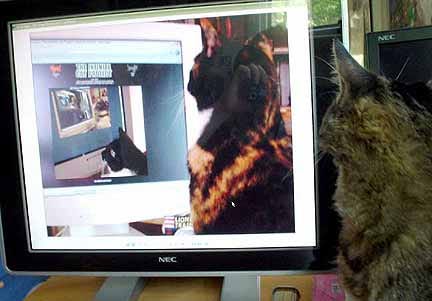






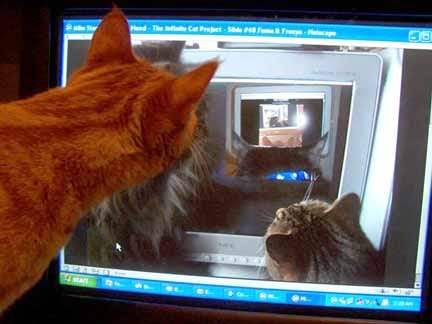

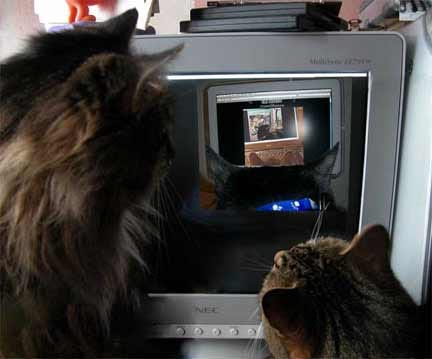



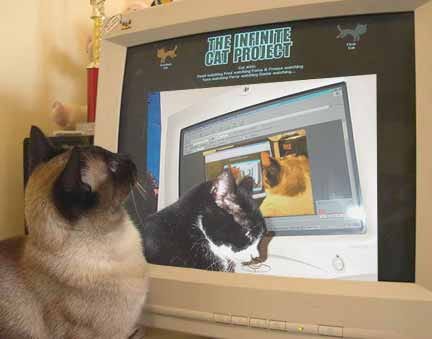








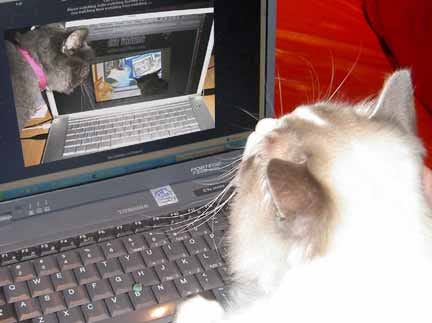






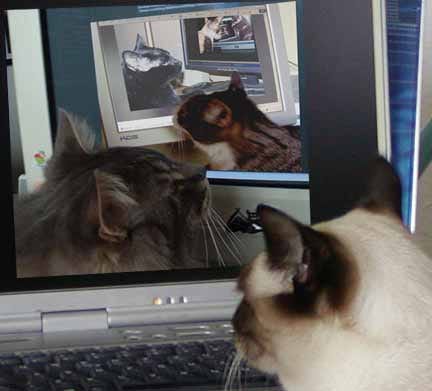


























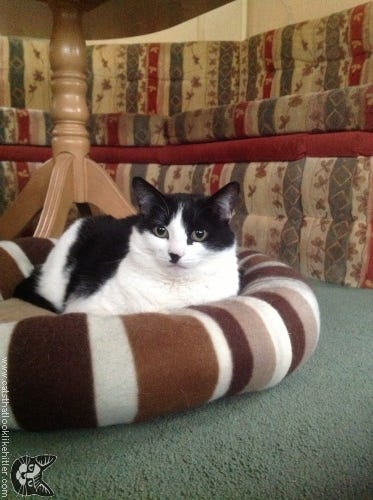







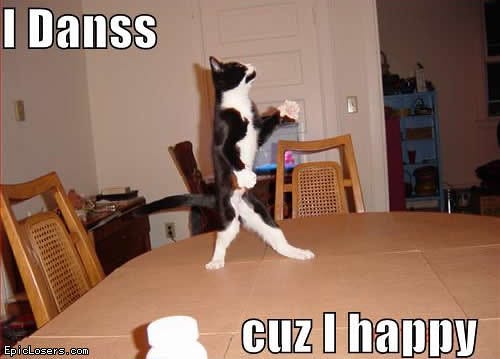
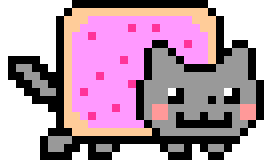
the man just wrote thousands of words about
cats